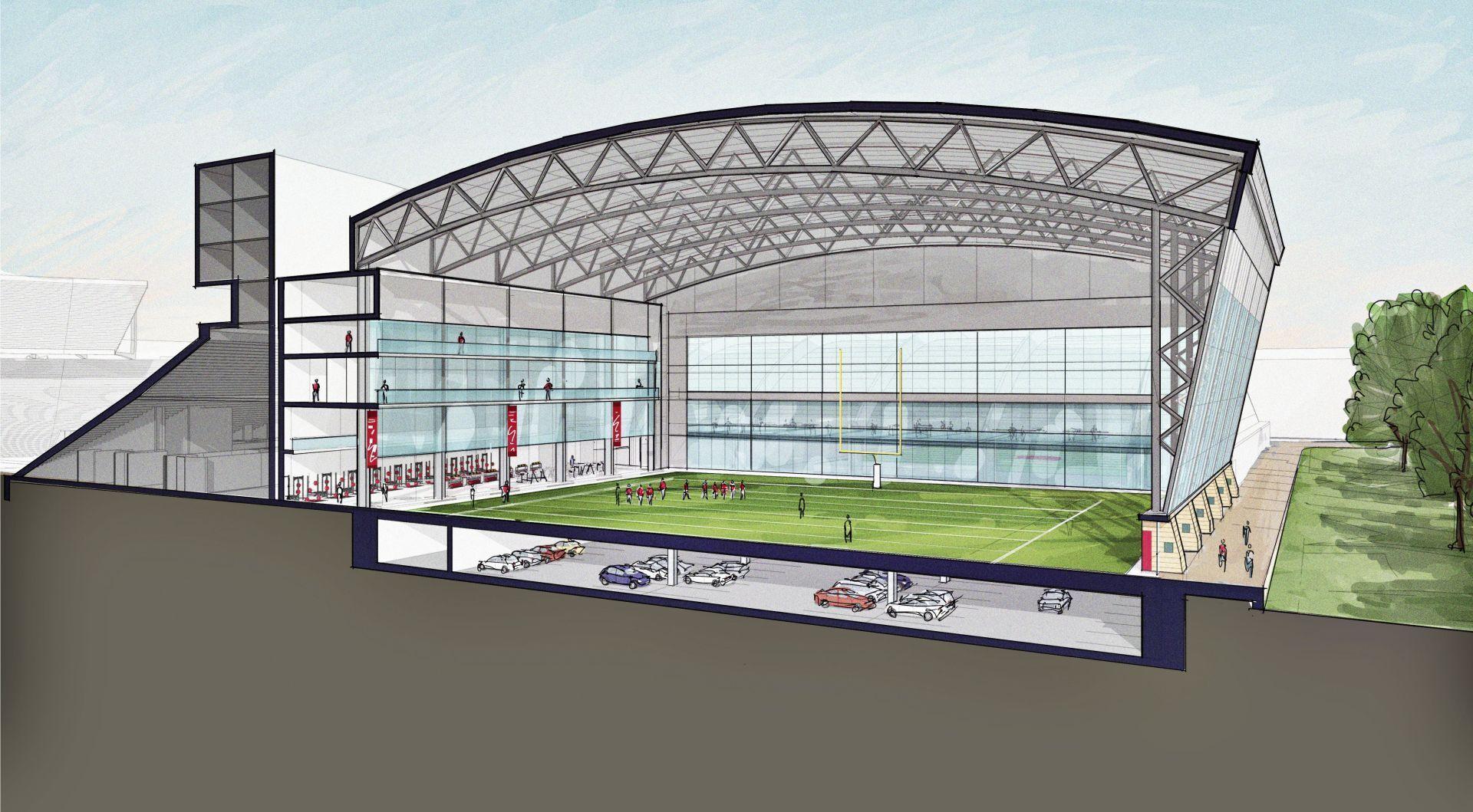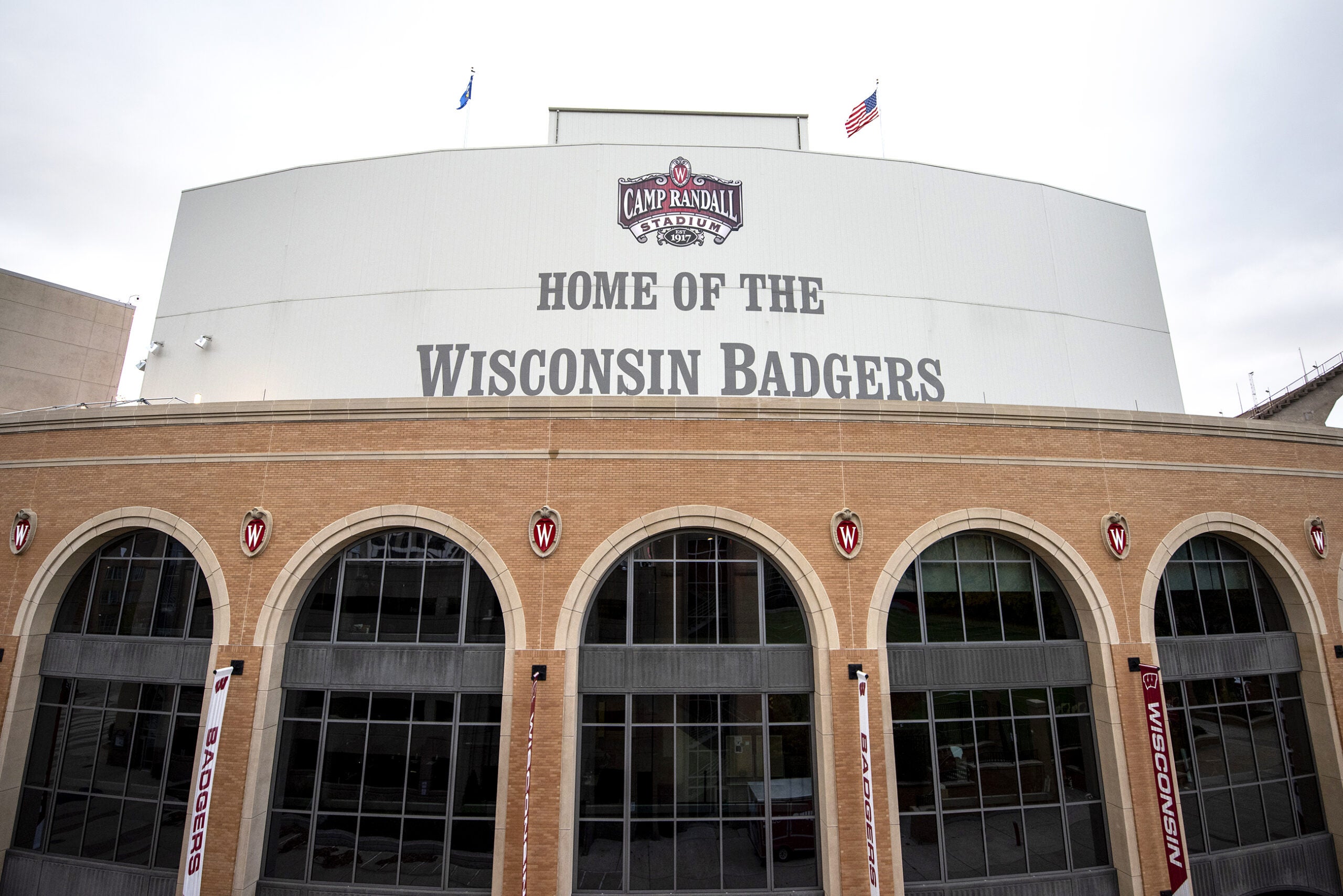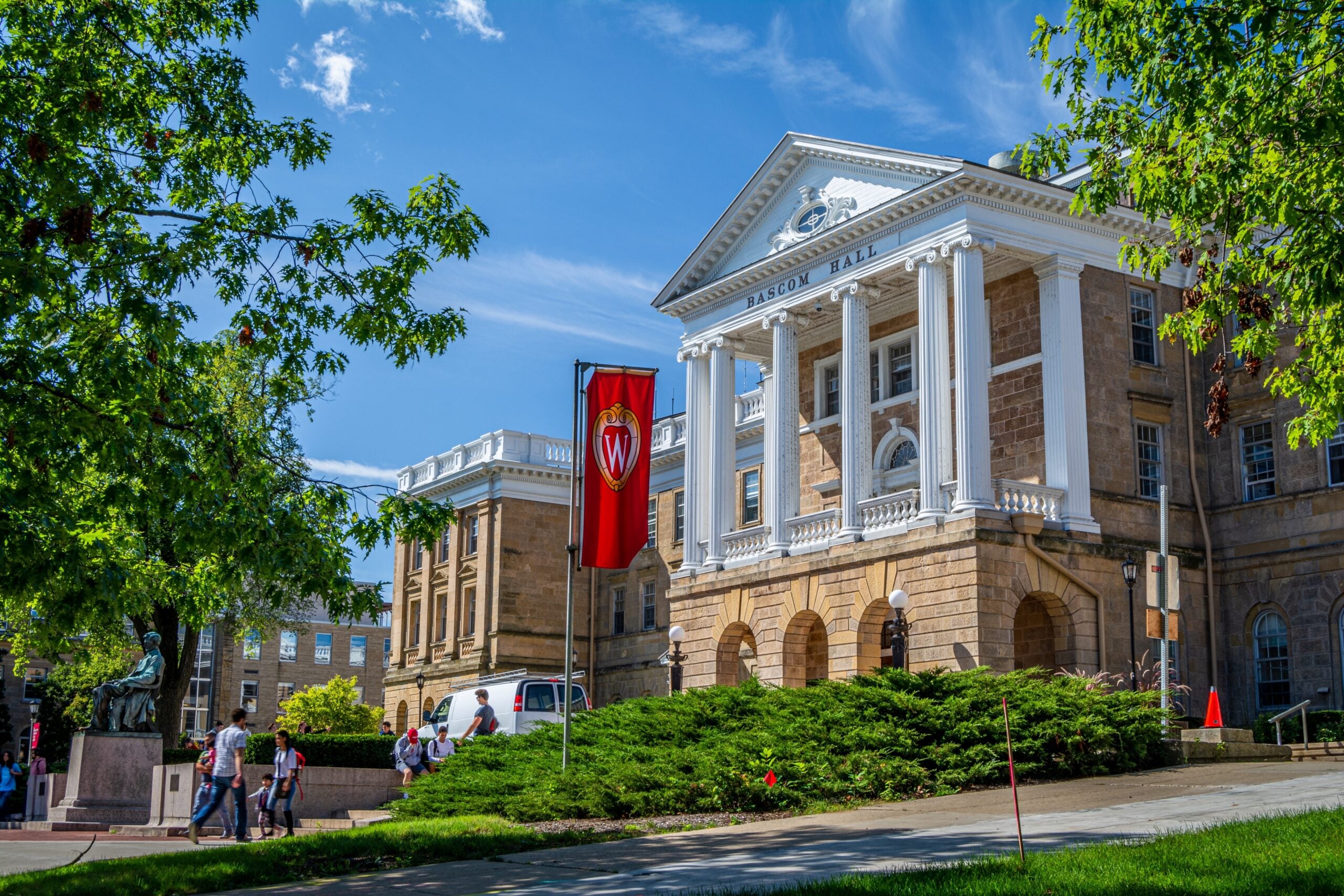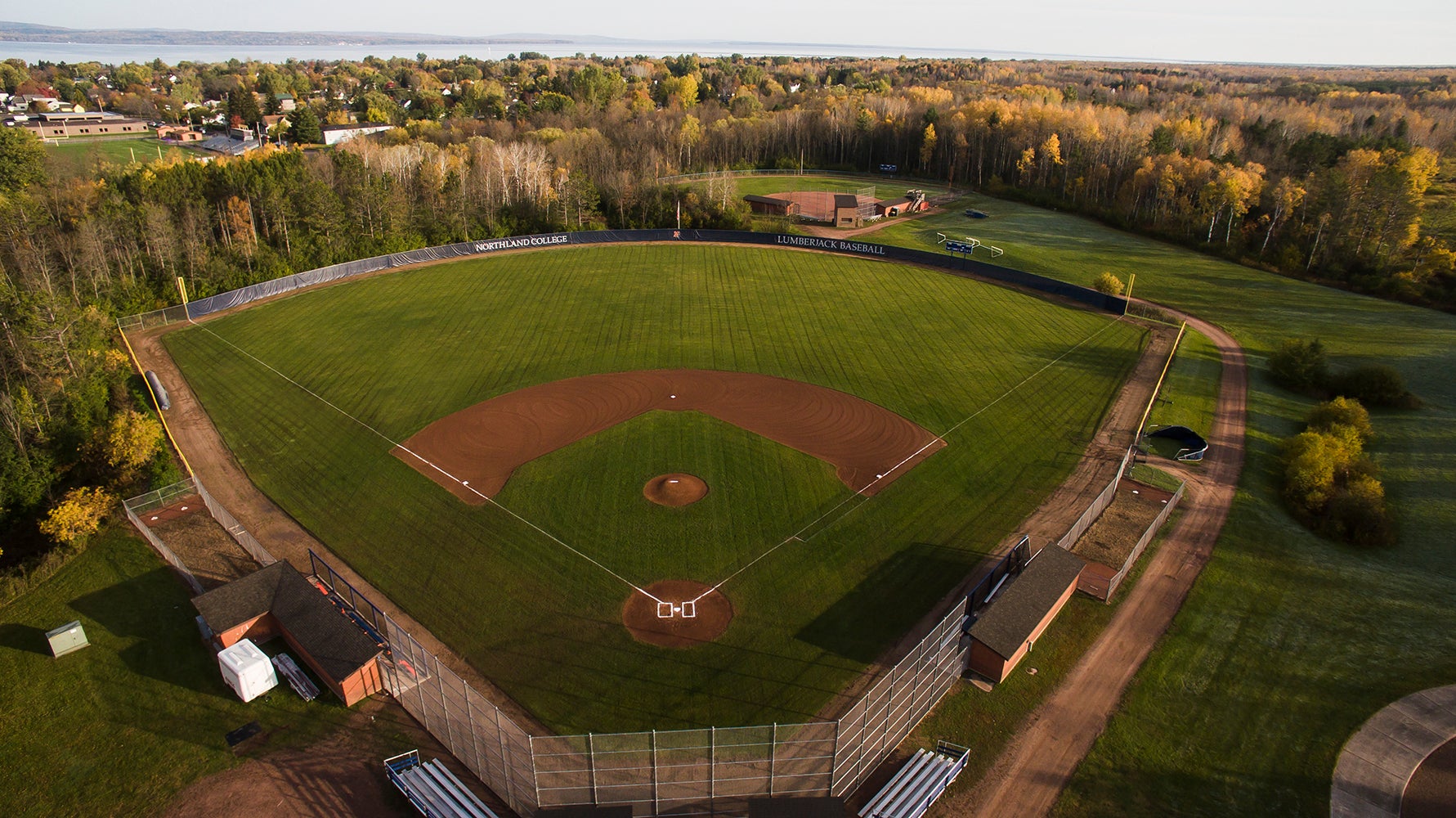A new sports facility at the University of Wisconsin-Madison is one step closer to breaking ground after the Capital Planning and Budget Committee of the UW Board of Regents approved the plans in a unanimous vote.
The project would replace the Camp Randall Memorial Sports Center, commonly known as the “Shell,” which was built in 1955. The new facility would include an indoor football field, strength and conditioning center, indoor track, student-athlete dining space, team meeting rooms and student-athlete support spaces.
Alex Roe, senior associate vice president for the Universities of Wisconsin’s Office of Capital Planning and Budget, presented the committee members with the plan.
News with a little more humanity
WPR’s “Wisconsin Today” newsletter keeps you connected to the state you love without feeling overwhelmed. No paywall. No agenda. No corporate filter.
“The project seems to maximize space, reduce deferred maintenance, replace obsolete facilities and provide a competitive environment for recruitment,” Roe said.
UW Athletics spokesperson Patrick Herb said the proposed facility would be a game changer.
“This is a project that’s really important to Wisconsin’s athletics and to our student athletes. And we’re really excited and grateful for today’s step in the process,” he told WPR.

Shell would get a makeover
A 2013 facility assessment documented mostly poor and fair conditions for each part of the Shell, and the current overall condition has been determined to be poor, according to the regents.
A request for the state building commission to take action submitted by UW Administration said the existing facilities are “insufficient.”
The new indoor football field would take the place of the McClain Center where the football team has trained since 1988.
“The deficiencies at the McClain Athletic Facility included inefficient adjacencies to football training facilities, inadequate size and configuration of spaces, and outdated or lack of facility’s offered by peer institutions,” the request said.
The UW-Madison football team has won 14 Big 10 championships and has the second-most wins in the conference in the last 10 years. The university argues success is linked to facilities.
It’s unclear which teams, besides football, will get the most use out of the center. But student-athletes from all 23 sports will have access.
“There’s a holistic approach that this facility is going to really support … in terms of academic facilities and meeting spaces, nutrition and strength and conditioning and sports medicine,” Herb said.
Updated facilities attract student athletes
The McClain Center is the oldest training center in the Big 10. The university wants to stay competitive with peer institutions in recruiting new student-athletes. Neighboring schools including the University of Minnesota, Northwestern and Notre Dame have all completed indoor practice field projects for their football programs in the last 10 years.
“A properly sized and functional indoor practice facility is a necessity for top-tier football programs, especially those in northern climates,” the regents said. “The current state of UW-Madison facilities are out of date, undersized, and/or underwhelming compared to their peer group competition.”
The Big 10 Conference is adding four teams this upcoming season. Herb said the ever-changing climate of college football can’t be overlooked.
“Having state-of-the-art facilities can only help the team’s abilities to compete in the expanded Big 10 and pursue our goal of competing for championships,” Herb said.
Plans also include renovations to lower-level spaces in Camp Randall Stadium, the construction of a new athlete performance and treatment space between Camp Randall and the new indoor practice facility, as well as new retail space.
Camp Randall Memorial Park, which borders the Shell, is on the National Register of Historic Places as a historic district. The Board Of Regents owns the land and will need to seek approvals before construction begins.
If approved, it would be the largest capital project in UW Athletics’ history. Total completion of the $285,163,000 project is expected in December 2026.
Wisconsin Public Radio, © Copyright 2026, Board of Regents of the University of Wisconsin System and Wisconsin Educational Communications Board.



